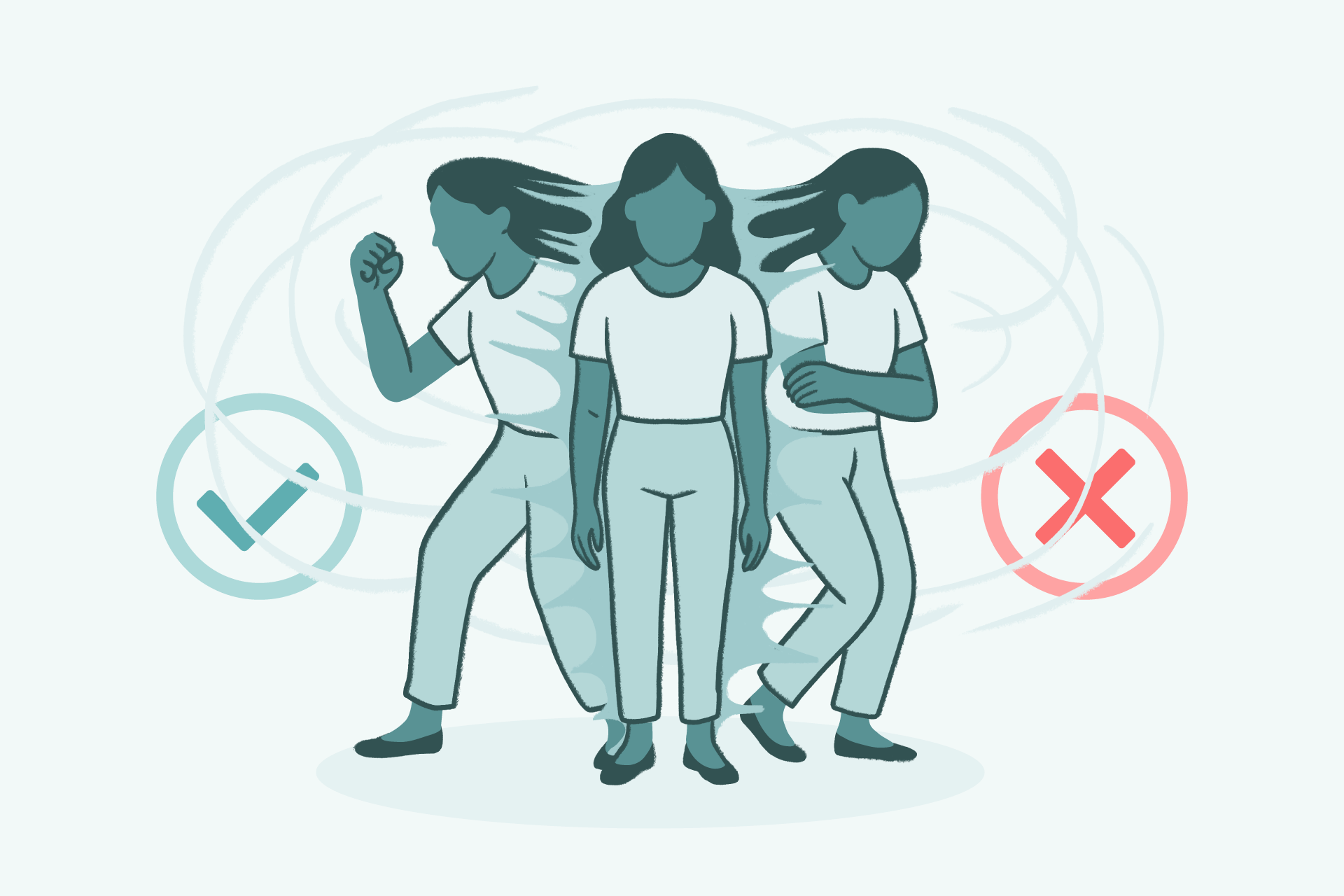BPD Test: 10 Questions to Understand Your Symptoms and More



Caroline Beidler, MSW is an author, speaker, and the Managing Editor of Recovery.com. She writes about topics related to addiction, mental health, and trauma recovery, informed by her personal experience and professional expertise.




Caroline Beidler, MSW is an author, speaker, and the Managing Editor of Recovery.com. She writes about topics related to addiction, mental health, and trauma recovery, informed by her personal experience and professional expertise.
Table of Contents
- Why Take a Borderline Personality Disorder Test?
- Symptoms of Borderline Personality Disorder
- BPD or Something Else?
- What Happens If You Score High on a BPD Test?
- Effective Treatment Options for BPD
- What the BPD Test Can and Can’t Do
- Who Should Take a BPD Test?
- Resources and Next Steps
- External Resources
- FAQs
If you’ve ever felt like your emotions are overwhelming, your relationships are unpredictable, or your sense of self is constantly shifting, you may have wondered whether something deeper is going on.
Borderline Personality Disorder (BPD) is a complex mental health condition that affects the way people relate to themselves and others. A BPD test—also known as a borderline personality disorder screening tool—can help you recognize patterns, reflect on your mental health, and consider whether it’s time to seek a professional diagnosis.
Disclaimer: This tool is not a substitute for a professional diagnosis. It is designed to help you reflect on your mental health. If your results raise concerns, speak with a licensed mental health professional or healthcare provider.
Why Take a Borderline Personality Disorder Test?
Not everyone who experiences emotional ups and downs or conflict in relationships has BPD. However, persistent patterns, such as impulsive behaviors, mood swings, and an unstable sense of self, may signal something more serious.
Taking a BPD screening tool can help you:
- Identify symptoms of BPD based on DSM-5 diagnostic criteria
- Reflect on areas of your life impacted by emotional instability
- Recognize behaviors like self-harm, binge eating, or substance abuse
- Understand the value of professional help and next steps for treatment
It’s not about labeling yourself. It’s about gaining clarity, and with that, the power to change.
Symptoms of Borderline Personality Disorder
According to the Diagnostic and Statistical Manual of Mental Disorders (DSM-5), BPD is marked by a pervasive pattern of emotional dysregulation, instability in relationships, and a fragile self-image.
Common Symptoms of BPD Include:
- Intense fear of abandonment, whether real or imagined
- Unstable relationships that swing between idealization and devaluation
- Distorted self-image or identity disturbance
- Impulsivity in areas like spending, sex, substance use, or reckless driving
- Recurrent suicidal behavior or self-destructive actions
- Chronic feelings of emptiness
- Intense anger or difficulty controlling anger
- Paranoia or feeling disconnected from reality under stress
These symptoms of borderline personality disorder often begin in early adulthood and can significantly impair your quality of life, relationships, and emotional well-being.
BPD or Something Else?
The emotional volatility of BPD can resemble other mental health disorders, such as bipolar disorder, ADHD, or complex trauma responses. That’s why it’s crucial to get an accurate diagnosis from a licensed mental health professional.
A BPD test is not diagnostic on its own, but it can provide a helpful framework. Some symptoms may overlap with:
- Bipolar disorder (characterized by distinct mood episodes, not moment-to-moment emotional shifts)
- ADHD (linked to impulsivity and emotional regulation difficulties)
- PTSD or childhood trauma (especially in those with complex trauma histories)
Only a qualified clinician can rule out other conditions, evaluate co-occurring issues like substance use, and create a personalized treatment plan.
What Happens If You Score High on a BPD Test?
A high score doesn’t mean you’re broken or beyond repair—it means you’re living with deep emotional pain that deserves attention.
Consider the following steps:
- Talk to a mental health professional: A psychologist, psychiatrist, or licensed therapist can assess your symptoms and offer a formal diagnosis.
- Review treatment options: Many evidence-based therapies are highly effective, even for people with severe BPD symptoms.
- Connect with support: Whether through therapy, peer groups, or loved ones, connection is essential to recovery.
- Explore co-occurring conditions: Many with BPD also struggle with anxiety, depression, problematic substance use, or eating disorders—these need integrated care.
You’re not defined by your diagnosis. But understanding it can be a powerful first step toward emotional regulation, healthier interpersonal relationships, and a more stable sense of self.
Effective Treatment Options for BPD
There is no one-size-fits-all solution, but there is hope.
Evidence-Based Treatments for BPD Include:
- Dialectical Behavior Therapy (DBT): Specifically designed for BPD, DBT helps people manage intense emotions, reduce self-harm, and improve relationships.
- Cognitive Behavioral Therapy (CBT): Addresses negative thought patterns and teaches coping strategies.
- Mentalization-Based Therapy (MBT): Helps individuals understand the mental states of themselves and others.
- Medication: While there’s no medication approved specifically for BPD, mood stabilizers or antidepressants may help with symptoms like impulsivity, depression, or anxiety.
Support for family members, psychoeducation, and long-term care can also improve outcomes.
What the BPD Test Can and Can’t Do
A borderline personality disorder test can offer insight, but it’s just one piece of the puzzle.
It can:
- Highlight patterns like emotional instability or self-destructive behaviors
- Encourage deeper self-reflection
- Motivate you to seek a professional diagnosis
It can’t:
- Replace a clinical interview or comprehensive assessment
- Diagnose you with BPD or rule out other mental health conditions
- Capture the complexity of your trauma history or support system
That’s why professional input is essential. The goal isn’t to label, but to inform and empower.
Who Should Take a BPD Test?
You might consider taking a BPD test if you:
- Struggle with unstable relationships or intense emotions
- Engage in impulsive behaviors, binge eating, or substance use
- Experience a fragmented sense of self
- Feel constantly afraid people will leave you
- Have a history of childhood trauma or neglect
- Have been told you’re “too sensitive” or “too much”
Even if you’re not sure you meet the full criteria, the test can start an important conversation, with yourself or a trusted clinician.
If you’ve made it this far, you’re already taking a courageous step. Whether you’re exploring the idea for yourself or supporting someone else, remember: reflection leads to healing—and you’re not alone in this.
Your past may explain your pain, but it doesn’t have to define your future.
Resources and Next Steps
External Resources
FAQs
Q: Is the BPD test accurate?
A: The BPD test is a helpful screening tool, but not a diagnostic instrument. It reflects potential symptoms based on DSM-5 criteria, but only a mental health professional can offer a conclusive diagnosis.
Q: Can I have BPD and not experience self-harm or suicidal behavior?
A: Yes. Not all individuals with BPD engage in self-harm or suicidal behavior, though these are common. Emotional instability and impulsivity are broader signs.
Q: How is BPD different from bipolar disorder?
A: BPD involves rapid shifts in mood often tied to interpersonal events, while bipolar disorder features longer mood episodes. Both require different treatment plans.
Q: Can BPD improve over time?
A: With proper treatment, many people see significant improvement. Therapies like DBT and CBT help with emotional regulation, identity issues, and relationship skills.
Q: Can a loved one take this test for someone else?
A: While it may provide insight, BPD tests are best taken personally. If you’re concerned for a loved one, encourage open dialogue and support them in seeking professional help.
Q: Is childhood trauma always part of BPD?
A: Not always, but childhood trauma, neglect, or invalidation are common risk factors. A comprehensive evaluation will take your personal history into account.
Our Promise
How Is Recovery.com Different?
We believe everyone deserves access to accurate, unbiased information about mental health and recovery. That’s why we have a comprehensive set of treatment providers and don't charge for inclusion. Any center that meets our criteria can list for free. We do not and have never accepted fees for referring someone to a particular center. Providers who advertise with us must be verified by our Research Team and we clearly mark their status as advertisers.
Our goal is to help you choose the best path for your recovery. That begins with information you can trust.







